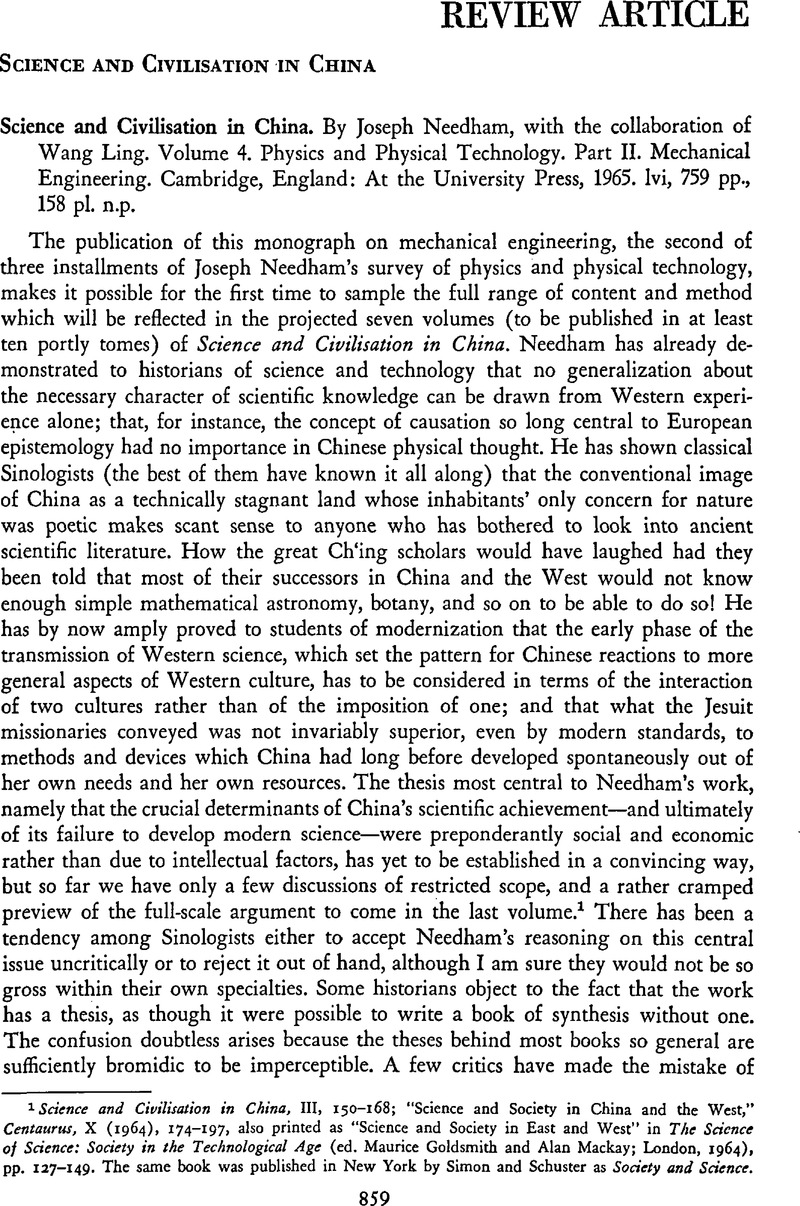Article contents
Science and Civilisation in China
Published online by Cambridge University Press: 23 March 2011
Abstract

- Type
- Review Article
- Information
- Copyright
- Copyright © The Association for Asian Studies, Inc. 1968
References
1 Science and Civilisation in China, III, 150–168Google Scholar; “Science and Society in China and the West,” Centaurus, X (1964), 174–197Google Scholar, also printed as “Science and Society in East and West” in The Science of Science: Society in the Technological Age (ed. Goldsmith, Maurice and Mackay, Alan; London, 1964), pp. 127–149Google Scholar. The same book was published in New York by Simon and Schuster as Society and Science.
2 Nakayama, Shigeru, “Joseph Needham, Philosopher of Organism,” Japanese Studies in the History of Science, VI (1967), 138–154Google Scholar; Cohen, Robert, “Is the Philosophy of Science Germane to the History of Science? The Work of Meyerson and Needham,”Google ScholarActes du Xe Congrés International d'Histoire des Sciences Ithaca: Proc. Xth International Congress for History of Science (Paris: Hermann, 1964), pp. 213–223.
3 For a masterly evaluation of Needham's command of the history of technology, see the review of Lynn White, Jr., in Isis, LVIII (1967), 248–251.Google Scholar
4 Since the publication of Volume 4, Part II, Needham has announced the discovery in China of a painting which pushes the priority for the standard method of introconversion of rotary and longitudinal motion (eccentric, connecting-rod and piston-rod assembly) back three centuries to 970. See his Presidential Address to the British Association, “The Roles of Europe and China in the Evolution of Oecumenical Science,” The Advancement of Science, XXIV (september 1967), 1–16Google Scholar, an invaluable report on work in progress with references to recent publications.
5 The italicized words in “If you don't have an ox or a horse to attach to it …” are also Needham's interpolation; the conclusion that wheelbarrows were drawn by animals in the second century A.D. is unwarranted.
- 2
- Cited by




